Treasure Hunt Math
Last week I shared one of my kids’ hands-down favorite ways to review math concepts, Game Show Math. This post on our Treasure Hunt Math game is our other favorite way to practice. We have been doing treasure hunts in our home since my kids were teeny tiny. Here are two posts from 2014! My oldest was a preschooler then. This math version combines the same follow-the-clues methodology with math practice! My kids love it. They don’t even mind that they are doing math, because it provides them with a challenge that makes them feel like they earned the “treasure.”
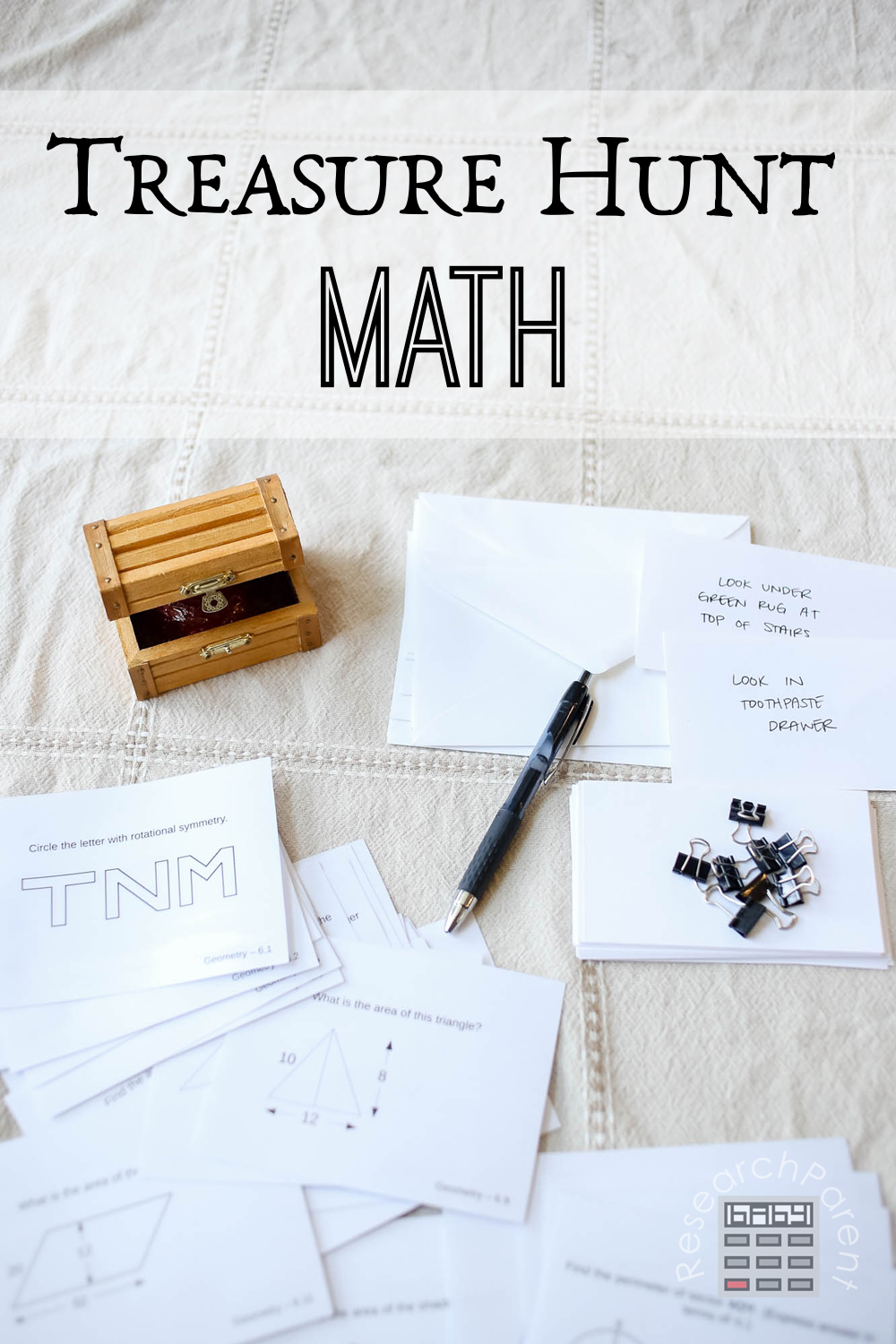
As with Game Show Math, this is a practice we have been doing for YEARS, always during our summer break. However, I’ve never shared it, because I thought I had to take the time to post all my math cards first. While I’m still planning to make blog posts for them eventually, in the meantime, I decided to just share all the cards in a Minimalist Math Library with my Patreon community! For $5 you can download all the cards for every grade level (currently 1st through 7th) by becoming a Research Parent Patreon member. I hope you continue to support my efforts to create useful and fun educational material for kids, but either way, you will have all the cards! These math task cards can be used for Game Show Math, this Treasure Hunt Math game, or just to make reviewing concepts quick and easy!
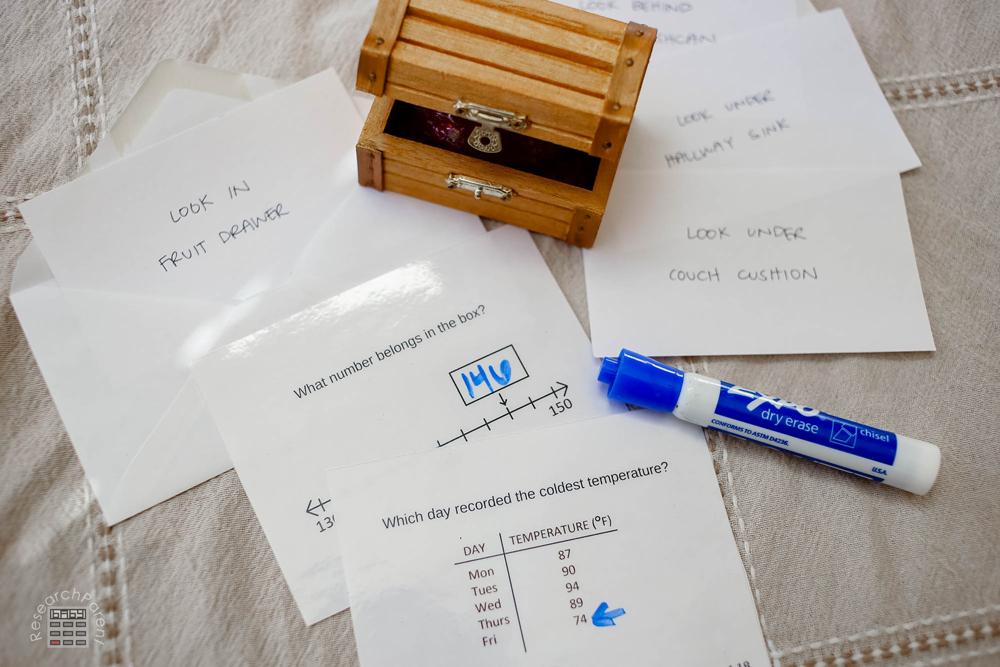
Even if you decide not to download my math task cards, you still have access to every problem that I use in my free Minimalist Math curriculum. You can always just copy the desired problems onto index cards!
There are a few advantages to this game compared to Game Show Math. The big one in my family is that the kids are not competing against each other. Rather, they are working cooperatively. I’ll be honest. Game Show Math has at times devolved into tears in my home when one child falls hopelessly behind his or her siblings (which is why I stretch the idea of fairness a bit to prevent that from happening). However, with Treasure Hunt Math, they are trying to locate the treasure TOGETHER.
The concept is simple. The kids are given their first clue inside an envelope, but to open the envelope, they have to solve the math problems clipped to the outside. Since I have four kids at four different grade levels, I clip 4 cards to each envelope, one for each child.
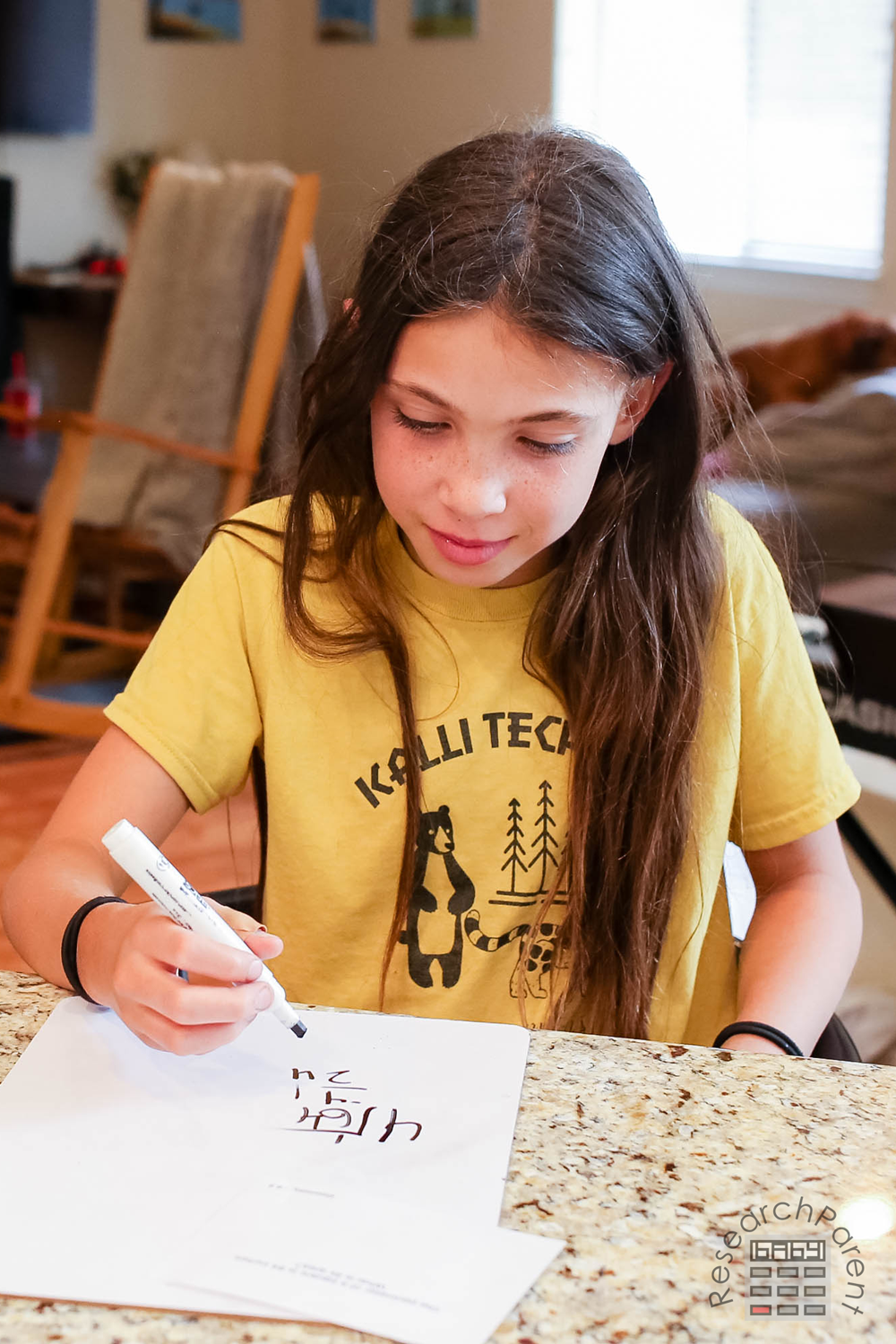
The second main advantage of Treasure Hunt Math is that, since they are on the same team, older kids help younger kids. This benefits not only the younger child, but the older one as well! (And me, the parent/teacher, since it’s less work for me!) Once I have given the okay that all the problems were answered correctly, they open the envelope to find a clue such as “look under the couch cushions” which leads them to their next clue packet! Rinse and repeat until, at the end, they locate the treasure. I use 8 clues so that each kid has a chance to open two envelopes.
For YEARS, we have always used a tiny orange dinosaur as the “treasure.” For this post, I decided to upgrade our standard dinosaur to an actual little treasure chest that belongs to one of my sons. However, anything will work for a treasure. My kids suggested coupons for ice cream or video game time. Those aren’t bad ideas, but since my kids seem satisfied to work for something pointless like a little orange dinosaur, I’m not planning to fix what isn’t broken.
Another advantage is that it does not take up a large space on your wall, like the pocket chart for Game School Math. I just keep all our Treasure Hunt supplies in a small shoebox that we keep using all summer. A final advantage is that you could play this with only one child and it would still be a lot of fun. When my oldest was young, he did these by himself, which honestly he probably prefered! Now that all my kids are older, I love that they can still play cooperatively without me having to set up a different hunt for each of them.
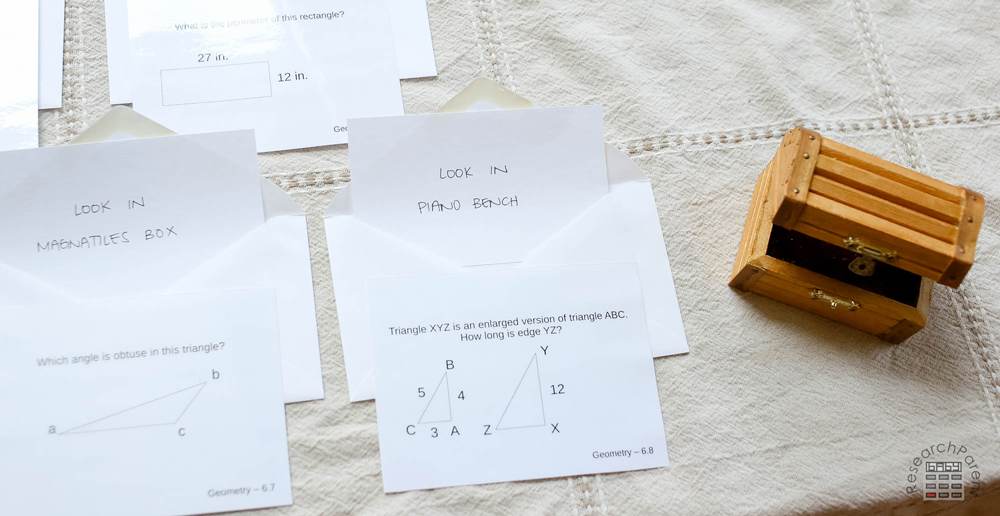
The primary DISadvantage of this fun method of math review over Game Show Math is that it takes a bit more work to set up! The Game Show Math board can be left up until all the answers are completed. I usually only update it once a week over the summer which gives us atleast 3 days to play. With Treasure Hunt Math, the game needs to be reset and the trail of clues needs to be hidden each day that you want to play.
Treasure Hunt Math Details
Recommended Age Range: Preschool, Kindergarten, Elementary, Middle School
Time Required: Using my task cards, this usually takes me about 15 minutes to set up a trail of 8 clues to a treasure. If you need to write out the questions, it will take longer. If you use my Patreon task cards, you will still have to download and print them the first time you play. I also laminated mine, which took even longer, but once that’s done, it makes it really easy to reuse them as often as needed! It takes my kids about 30 minutes to solve all the problems and follow a trail of 8 clues.
Difficulty: The first time you do it, it can be a little confusing to make your trail since you have to work backwards. Once you get the hang of it, it’s easy! The problems themselves can be as challenging as you want.
Cost: All of my task cards for Grades 1-7 can be obtained by becoming a $5 Patreon member. Or you can make your own task cards for free by writing on index cards!
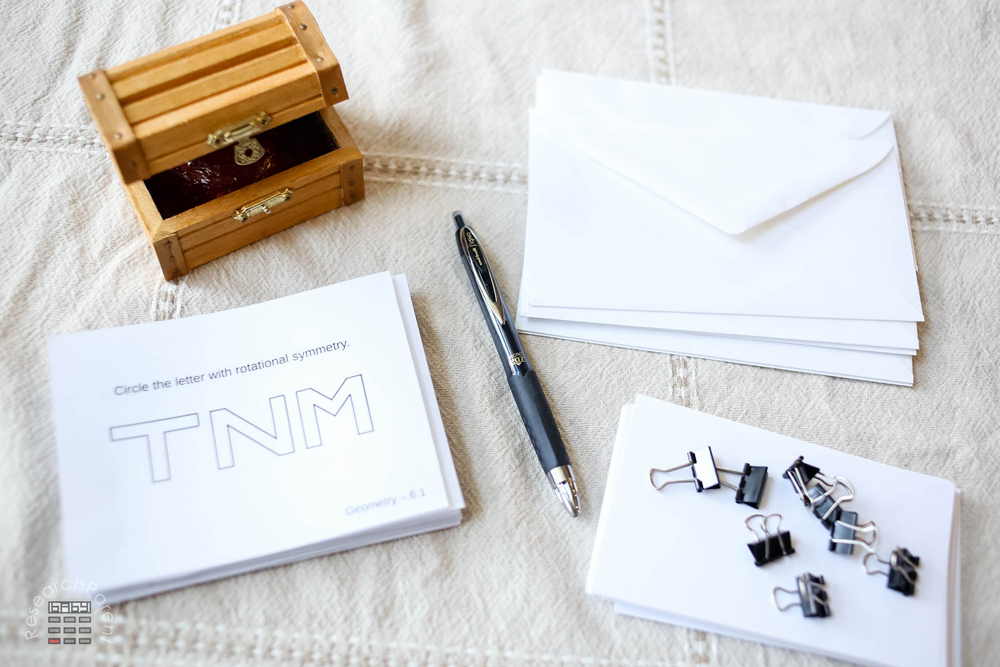
Materials
- A treasure! (For the pictures in this post, we used an actual treasure chest that belongs to one of my kids, but you could really just hide any toy. Or you could take my kids’ suggestion and hide a coupon for something fun!)
- Blank index cards
- Envelopes
- A pen
- Binder clips (I used the mini kid)
- My Patreon Minimalist Math Task Cards (optional, could also write problems on index cards)
Instructions
- The first step is to brainstorm places in your home that you can hide envelopes! Hide clues to these locations on index cards. At least some of the locations need to be spacious enough to hide your treasure. You could start by just thinking of 8 places to set up the first trail (or however many clues you want to use) or you could brainstorm at least 25 places to use the whole time you play. Over the years, my stack of hiding places has grown to about 40 places.
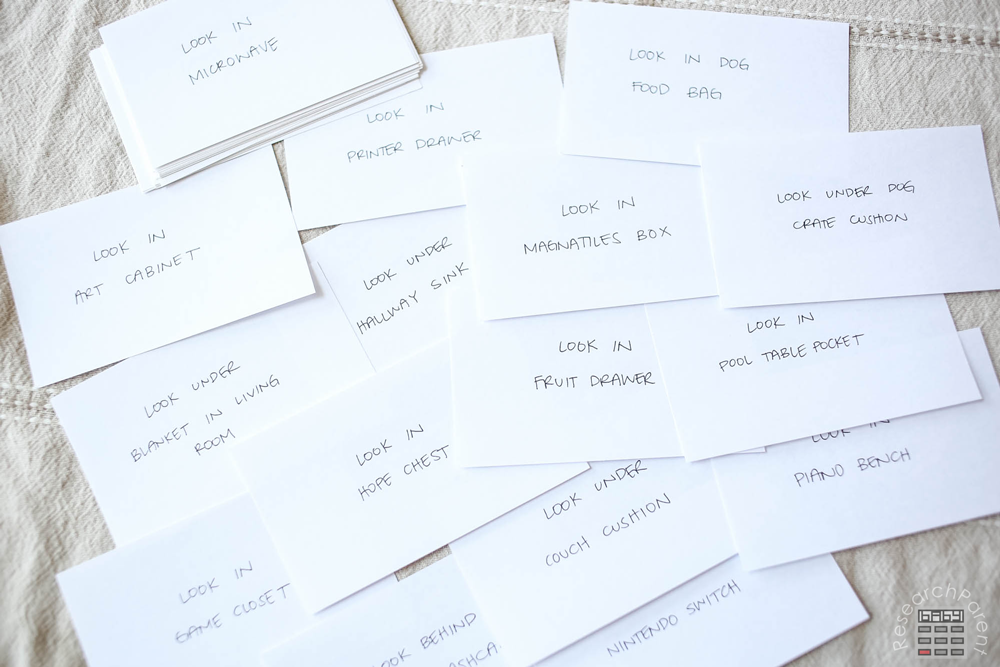
- Next, you need to decide on your problems. Again, you could just concern yourself with problems for this one hunt, or you could gather your problems for the whole summer. If you are writing your own problems on index cards, my free Minimalist Math curriculum is a good place to start. If you want to save time, you can become a Patreon member to print out the math task cards that I use. There are 10 categories of problem for each grade level. I usually choose 8 cards from the same category for one game, such as 6th grade geometry, so that the child is focusing on one skill that increases in difficulty as the hunt goes on. It is entirely up to you!

- Once you have your stack of 8 hiding places and 8 clues (or however many you decide), you can make your trail. I start by laying out envelopes in a line for that number of clues then randomly put a hiding place in each envelope. Don’t close the envelope yet, because you need to be able to read the clue. Put your question cards on top of the envelopes increasing in difficulty as you go so that the hardest question is at the end. I also like to set the treasure at the end of my line to visually see where they are going and what they are doing.
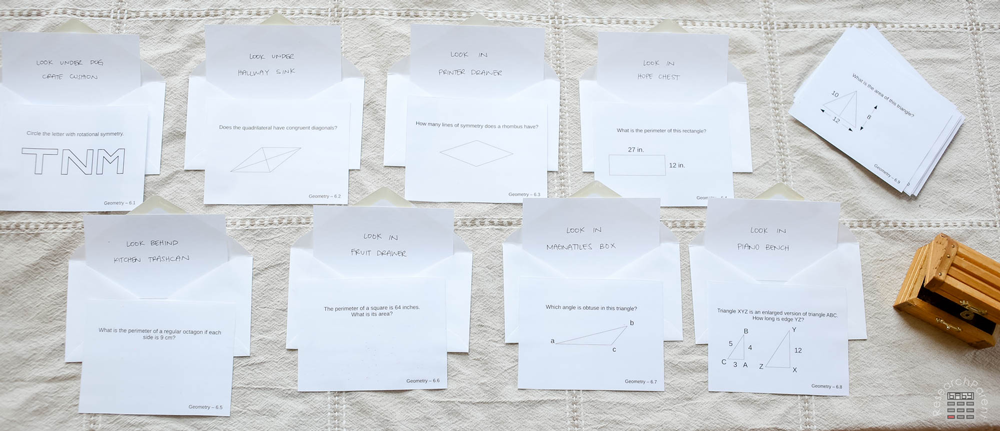
- This next step is optional. IF you have more than one child and you want them to work together, add extra questions cards so that everyone has something to do at each step. Since I have four kids, each clue has 4 questions attached to it, one for 2nd, 3rd, 5th, and 7th grade (we are reviewing the grades they just finished). Another advantage of this game over Game Show Math is that the kids can be working on entirely different skills.
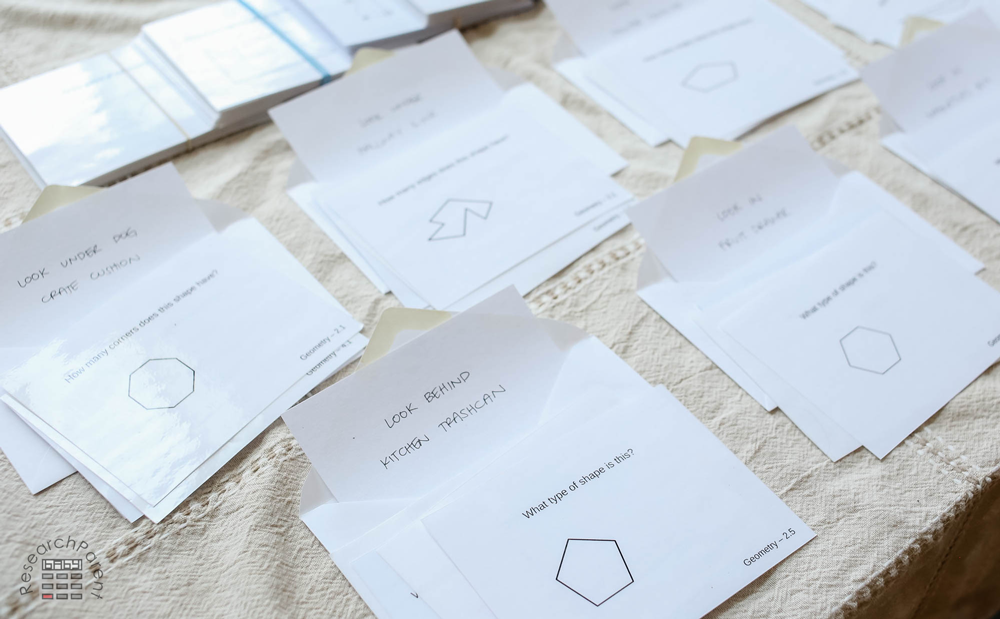
- Now it’s time to hide the clues! This can take a little thought, but the key is to WORK BACKWARDS! Start with your treasure. You will look at the clue right before it to know where to hide it. You need to make sure that this clue specifies a place that is big enough to hold the treasure. It not, swap it out!
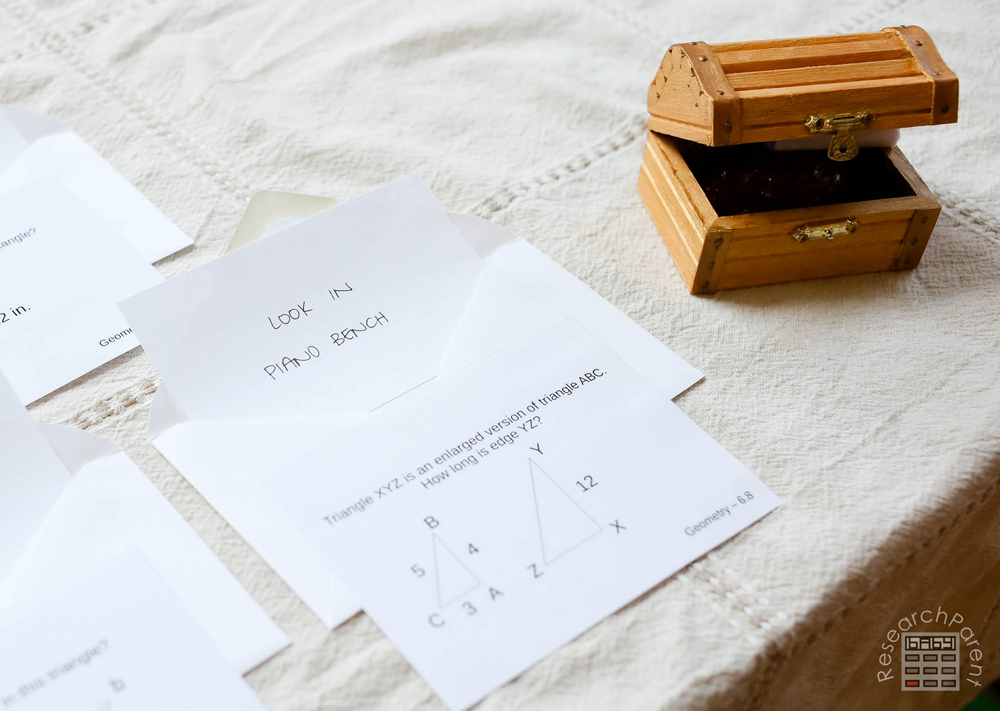
In this case, the last clue says to look in the piano bench, so I put our treasure in the piano bench.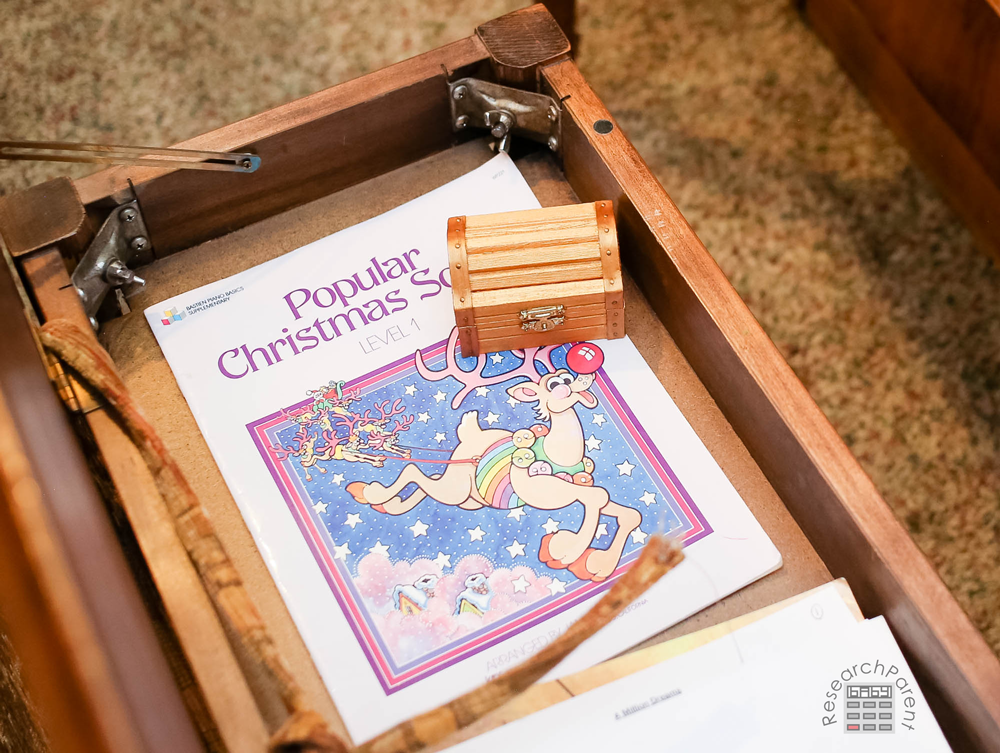
- Now, you work backwards. You can assemble the final clue packet by closing the envelope with the clue inside and clipping the question cards to the outside. I like to organize the questions youngest to oldest so they know whose is whose. To know where to put this last clue, you look at the clue before.

In this case, the clue before says to look in the Magnatiles box, so that’s where I will stick this clue packet that I’ve just assembled. You can just see it poking out.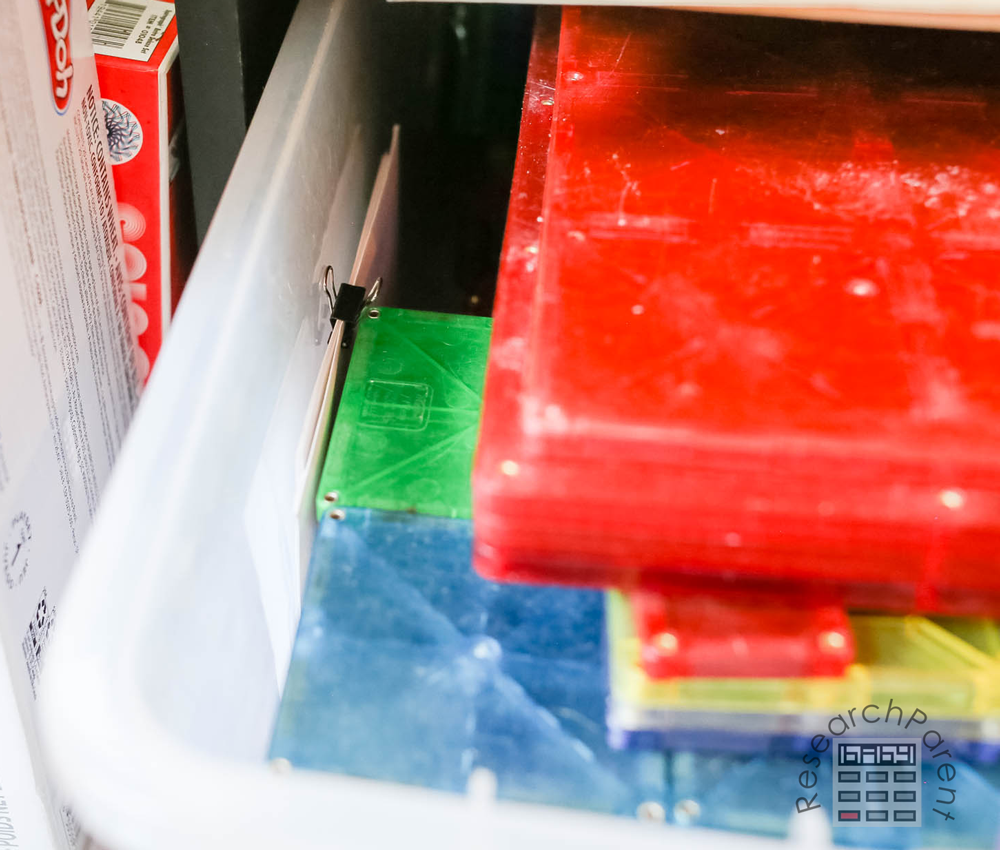
- From here, you simply work backwards until you assemble your first clue packet. Since there is no card before to tell you where this first clue should go, I just hand this packet to my kids when it is time to play! They will work their way forwards solving the solving the questions, opening the envelope to read the clue, and following the trail until they reach the treasure.
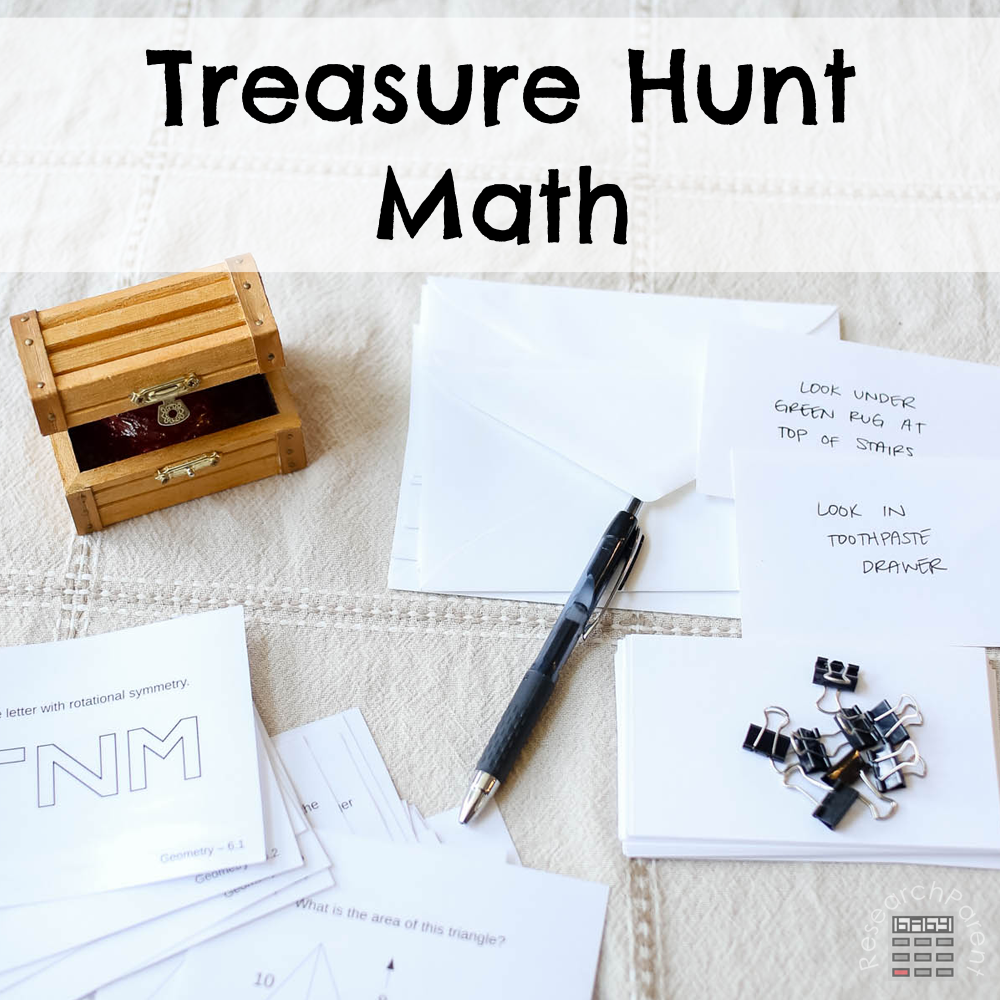
I hope your family has as much fun with this as we do! Enjoy!
Click here for all the Minimalist Math curricula available for different grade levels.
Related Links
Math Activities for Kids
Minimalist Math Curriculum Methodology
Learning Activities for Kids
The post Treasure Hunt Math appeared first on ResearchParent.com.
